Oh frabjous fucking day. The Microsoft Kinect SDK is out. Along with a license that takes a very, very nasty FAQ to explain.
On this big day in UI development, let's take a look over the current console controls landscape, and what it means to non-game developers.
Why focus on game consoles controls? They've driven down sensor prices like crazy, due to mass manufacturing and required price points for game sales. They've established more than a few careers of non-game-developers now. Uses of the kinect and the wiimote for projects not pertaining to their original console have been all over the media lately. Keeping a forecast of where development for these technologies is going means we have a better idea of how to ride the wave when it comes.
Disclaimers
- In terms of licensing issues, I am not a lawyer. I do not play one on TV. However, I do have a lawyer fursona.
- While I am part of the OpenKinect project, I do not speak for others involved in the project. All opinions expressed here are my own, and all cursing is far fucking better than anyone else on the project could turn out, so while I may share my source code, I'm not giving them rights to that.
- I strive to keep all the information as correct as possible, but, well, I've been drinking.
- I am not a game developer. I am a reverse engineer that specializes in controls and interface devices. My view of this hardware is purely from the driver and capabilities side.
- I have not directly used the Move SDK or Kinect SDK. But I have read some articles and created very strong opinions, which means they are valid for internet consumption.
- This article is only about reversing/using alternative console controllers, not about reversing consoles themselves. There's a completely different history to that which would take much more than a blog post to cover, though I will admit that it does have some influence on the information here..
Nintendo Wiimote
The WiiMote was first out of the gate, so let's start with it.
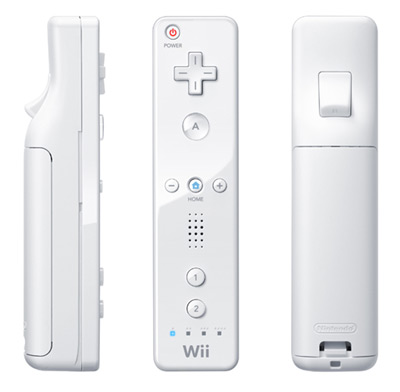
You get:
- 100hz update for 4 IR points with 4 bits of depth @ 1024x768
- 3-axis Accelerometer
- Bluetooth Communication
- 3-axis Gyro with WiiMotion Plus
- Extensible Control Port
What Nintendo provide in terms of software
Nothing.
What the community provides in terms of software
The Wiimote protocols have been reversed and known for years, and there's availability in pretty much every language you can think of.
What Nintendo thinks of non-game developers
Are you Zelda? Are you Mario? No. No you are not. Therefore, go fuck yourself.
Nintendo hasn't put out anything in terms of press releases about the DIY community during the lifetime of the Wiimote. They're happy to let them live seperately, and that's a fine strategy. Nintendo has to put zero into support, they aren't actively stopping people from using the wiimote, and developers can survive on their own.
Where Nintendo is going with it
Honestly? Not real sure here. With the upcoming release of the WiiU controller, there wasn't a lot of talk about Nintendo's flaily controls strategy.
Where the community is going with it
Where haven't they? There's Johnny Lee's demos, there's sex toys, there's more "generative art" than you could shake a wiimote at. The Wiimote is as ubiquitous as alternative controls get these days.
With the WiiMotion Plus, it even turns into a nice IMU. The WiiMote still has some life to it as a cheap, extensible sensor platform, especially with the amount of prior usage it has seen already. Outside of a somewhat flakey bluetooth interface, the "just works"ness of it will keep it alive for a while to come.
Nintendo WiiU Controller
I don't even know if this'll exist in a year, but it's been announced, so might as well talk about it.
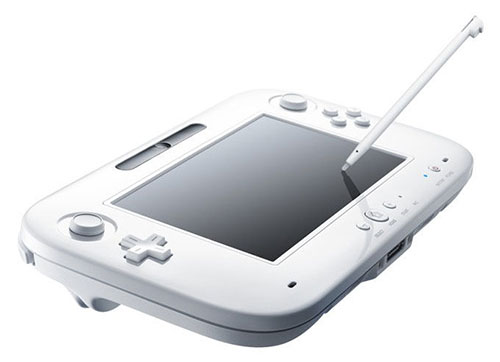
You Get:
- A 6.2inch screen
- No idea on communications method, but enough bandwidth to pipe over video in real time
- Joystick
- 3-axis Accel/Gyro
- Front Facing Camera
- Probably other stuff that I'm missing or they'll add.
What Nintendo provide in terms of software
Well, it's not gonna come out for another 18 months, so I have no idea. It may not even look the same by then.
Where Nintendo's going with it
I... don't know, and I don't think that's good. It's almost too integrated, when we're already seeing new controllers that provide both physical controls and a detachable screen.
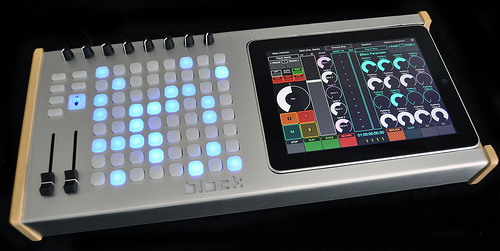
Above: Livid Instruments Controller integrated with iPad
These are using tablets that, by the release time of the WiiU, should be under $100. Between the Android OpenAccessories SDK and whatever Apple decides to do, this will be far beyond replicated by release. Not only that, the rumors are flying about the WiiU only working with one controller per console.
In the end, it's really too far out to make accurate predictions for this, though that's obviously not stopping me from trying. I thought the GBA interface to Gamecube games was great, but, well, it could still be a GBA after that too. This... Who knows. It doesn't seems as mind breaking at the Wiimote did, but then again, you only get to one-up the joystick once.
What Nintendo think of non-game developers
You still won't be Mario or Zelda, so you can still go fuck yourself.
More important this time though, why would it be easier for you to work with Nintendo's hardware than with a tablet and another accessory? Nintendo has already proven time and time again they don't care to support developers outside of console games. Doesn't seem like this will gain community traction in its current state.
Playstation Move
Sony's entry into the gaming market: a wand with a light on it.
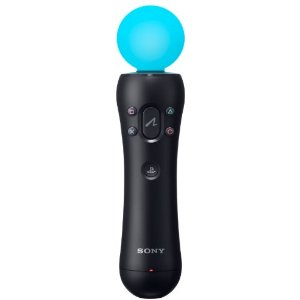
You get:
- A wand with a light on it
- Bluetooth connection
- Accelerometer
- Gyro
- EyeToy Camera to watch wand with light on it
What Sony provides in terms of software
The MoveMe SDK, announced at GDC, not yet released. This allows you to get full real-time 3d positioning from Move controllers.
It requires you to get this information via a network connection to your PS3. The tracking algorithms are locked onto the PS3, and you have to have the console running special server software to use the SDK.
To develop for the Move, you have a minimum investment of around $600, for the controller plus the console. A fanboy would tell you that you also get a Blu-Ray player out of that. I am not a fanboy.
What the community provides in terms of software
There's the MoveOnPC project, which is an effort to create open source drivers for using the Move as a control mechanism. They're not real far along yet, but the project is at least active.
What Sony think of non-game developers
"Absolutely adorable" is about the best thing I can think of. They think the homebrew and DIY community is cute, and they seem to view homebrew devs, much like their customers, as lesser beings. Weirder still, they seem to harbor both fear and disdain at the same time. For instance, as seen through the way they released the SDK. They're making SURE you have to have a console, and that you only get what they want, and getting to their algos will require both hardware and software reversing.
Where Sony's going with it
Same idea as the Wiimote, except more accurate positioning. Build plastic toys around it, use those as controls. Oh boy.
Where the community is going with it
This turns the Nintendo view around... Does the community really care? I haven't seen bounties out for the Move. I haven't seen message boards filled with people working on it. This time, it seems like the company would be insulting the community with the way they released their SDK, but the community doesn't even care in the first place.
Microsoft Kinect
For the Kinect, we've got so many different solutions out there now that I'm actually splitting them into their own sections.
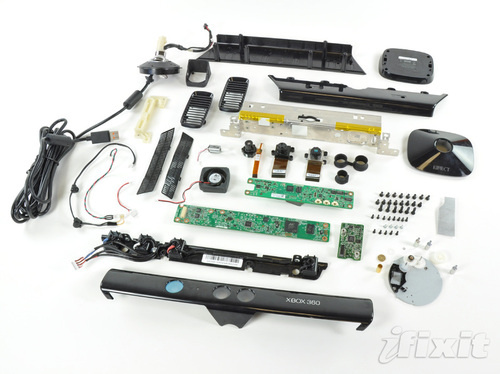
You get:
- 640x480 RGB @ 30hz
- 320x240 Depth @ 30hz, .5-4m depth range
- USB 2.0 High Speed Connection
- Microphone Array
- LED, Accelerometer
Microsoft Kinect - OpenKinect
OpenKinect was the project that sprung up around the OpenKinect Bounty hosted by Adafruit Industries in November 2010. If you've like a more in-depth history, check out my presentation on it at Maker Faire 2011.

As I said in the intro, while I am part of the OpenKinect project, what I am stating about the project here is my own opinion, and does not speak for other members of the project.
What OpenKinect provides
An open-source, cross-platform method for accessing raw data coming off of the kinect. Nothing more, nothing less. It was the first to publically provide access to images, leds, and accelerometers on all major platforms. Audio support is in the works, and has been taken to the proof of concept stage.
There's been talk of including processing algorithms created by the open source community, in a seperate library. This part of the project has not yet taken shape, though, and most concentration lies in finishing the driver.
What OpenKinect think of non-game developers
Not to sound harsh, but they just don't. They don't really think about any kind of specific developer. The driver exists to be just the driver, and this is the simplest way to serve that goal. You take it and do whatever you want with it. Have fun.
What this means is that, unlike OpenNI and Microsoft's SDK, OpenKinect is the easiest way to get the raw data from the camera. If you are interested in doing something other than skeleton tracking, this makes it the lowest barrier to entry.
Where OpenKinect is going with it
At this point, it's all about finishing providing the features of the camera. This mostly has to do with the audio core, as the camera features are fairly well covered.
In terms of what will happen with OpenKinect now that the Microsoft SDK is out, I think the answer is "not much". There's a fork of OpenNI's sensor library that uses OpenKinect to talk to the kinect and provide the rest of the OpenNI capabilities for that camera. MS has no interest in supporting non-windows 7 platforms, so there will certainly still be a place for OpenKinect in the Kinect ecosystem.
Not only that, Windows has been by far the hardest platform to deal with for development and support for OpenKinect. I actually hope that we can build an API wrapper around the MS SDK, to make it fit with OpenKinect without having to switch out drivers. However, having not read much of the MS SDK documentation as of yet, this remains to be seen.
Also, with the licensing terms as they currently are, OpenKinect remains commercially viable on all platforms, while Microsoft's SDK specifically prohibits that kind of usage.
Microsoft Kinect - PrimeSense/OpenNI
A few weeks after the OpenKinect project put out the source for their library, depth camera chip manufacturer PrimeSense followed suit with their own SDK, known as OpenNI.

OpenNI is both a library and an initiative. The library is the implementation of a standard that PrimeSense is pushing to be a standard SDK for future depth sensors. The initiative part includes multiple companies on board with this standard.
What PrimeSense provides
PrimeSense provides 3 different libraries, all cross-platform, with varying open/closed source policies:
- Sensor - Hardware access library. Their version only supports their PrimeSense SDK camera, but there's a version that's build on top of OpenKinect for kinect access. Open Source.
- OpenNI - This is supposed to be an "abstraction library for depth cameras". Which I guess translates into "huge C++ beast". It's a way to abstract depth camera information so you can use anything providing depth data with any program that will take depth data. Seeing the only consumer depth cameras are PrimeSense's, this works out well for them. Open Source.
- NITE - This is PrimeSense's body/skeleton tracking library. Unlike Microsoft's algorithms, NITE requires a calibration pose to find skeletons, meaning you have to stand in front of the camera and hold your arms in a certain way for it to find you in the scene. This can be flakey sometimes. Unlike Microsoft's libraries, NITE is available for commercial use. It is closed source, but the binaries are free.
What they think of non-game developers
Developers, via OpenNI, are marketing for PrimeSense.
Funny enough, PrimeSense doesn't actually care about game developers. It's not really even their domain. Primesense wants to own the home theatre remote control market, hence their focus on things like the Asus Wavi Xtion. The battle for being able to control your media consumption is far larger than the battle to control how you flail in front of your TV and call it control. More people watch TV and movies than play video games, and the amount of hours logged on watching activities is exponentially higher. TV Remotes are getting unwieldy now, so the next step that is apparently logical to someone with money is that we now wave our hands around to start and stop our movies, or change our channels.
On top of this, PrimeSense is not a camera company, they are a chip company. They need to be able to sell their chip in large quantities to people who will manufacture cameras with it. Therefore, if developers make applications with OpenNI/NITE, and OpenNI/NITE will "just work" with any PrimeSense camera, then PrimeSense gets to claim they are "open", and anyone that manufactures a camera with a PrimeSense chip will have access to all the applications that've already been written by other developers.
Where they're going with it
OpenNI/NITE is another weapon in the battle for the home theatre as home information hub. That's why PrimeSense wants the chip and software everywhere, not just in kinects. So, they're betting both for and against Microsoft at the same time, which is a very interesting position to be in.
If NITE doesn't support non-calibration poses very soon, it's going to lose out to SDKs that do. MS has proven you can track bodies without calibration, even if it does take thousands of hours of video to analyze through advanced algorithms. Now that MS's SDK is out and does not require calibration poses, people's expectations are quickly going to change. NITE still has a foothold on the commercial licensing side, but that doesn't help much for consumer expectations of product.
Microsoft Kinect - Microsoft's SDK
On June 16th 2011, Microsoft released their own SDK for the kinect, much to the surprise of just about everyone, since there had been no communication since March about it.
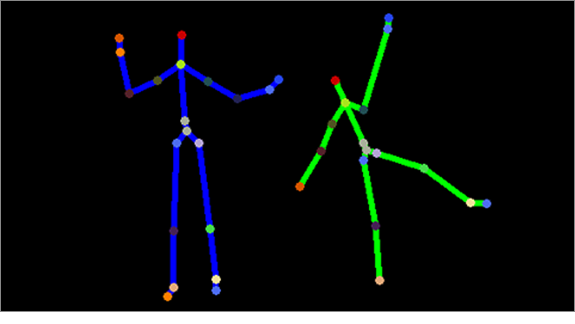
As of this writing, the SDK is still considered "beta", and is only available for non-commercial use.
What Microsoft provides
Seamless skeleton tracking, which is a huge deal. While the algorithms have been released and replicated in open source, the advantage that MS has here is big data. Thousands of hours of training sets to send through the algorithm so that it can find any body type, meaning that people can walk in and out of the scene and instantly be recognized and tracked. Seriously fucking BIG deal.
There is also access to the audio system, which no project has gotten a complete hold on yet. OpenKinect has some access to the raw audio stream, but Microsoft provides a voice SDK that allows developers to identify and position users based on sound.
What they think of non-game developers
With the beta licensing terms, developers are somewhere between fanboys and marketing. Open Source developers are back on the bad side, too.
The Beta SDK FAQ is chock full of interesting issues, including:
- Not being able to distribute applications standalone, users must also download SDK to get the runtimes
- No commercial use, and on top of that, due to the fact that MS cannot predict the usage of the kinect SDK, all SDK derived applications should not be considered "allowed under the SDK".
- Microsoft owns the right to say what software you can use the hardware with, and using the kinect with anything outside of the SDK is not allowed. Even with this wording in place, the MSDN Channel 9 launch video lauded all of the open source applications currently available for the kinect.
- The SDK will not run on Virtual Machines
- Refusal for any SDK derived application code to be released under copyleft licenses (GPL, etc...)
In other words, you can write kinect apps for yourself, then you can upload videos of those apps to show off how awesome the SDK is, but redistribution is not allowed, and neither is selling. There's no word on when a commercial SDK will be available or how much it will cost.
Of course, MS can't really track most of what they claim in the FAQ, but it seems to be worded in a very predatory way. It's still better than Sony's "lock down the algorithms on the console" idea, and it's not really enforcable for a lot of projects. Whether anyone but nerds like me will give a shit about that is a completely different question that we're not going to answer because it's my blog and I'm the center of the universe here.
Where they're going with it
Everywhere, and into everything, as fast as possible. Which, for a company the size of Microsoft, will not be all that quick. There's already talk of Windows 8 shipping with kinect drivers.
With the algorithms and samples Microsoft has put out in their SDK, they've jumped way ahead of the other solutions in the NUI game. Without the calibration pose requirement, MS SDK programs should "just work" for people coming in to/out of the scene. It adds access to the audio core that no other solution can get anywhere near at the moment. For the time being, MS is now winning the NUI game in terms of capabilities available to developers.
At least, for developers want to make non-distributable demos. Since the license is still non-commercial only, that's all they're going to win. This could end up pissing off the industry enough that they find some way to replicate it without Microsoft's terms. At that point, we have a very fun war on our hands.
Where the community is going with it
There's not much of a community to speak of since it's been out all of 10 hours as I write this. While I know CodePlex is huge, I've never really dealt with the MS Open Source Community, or, well, any MS community period in the past decade or so. I guess we'll see what happens. I'm certainly interested to see how the cultural philosophies of OpenKinect versus MS SDK influence the projects that come out of them.
For a better perspective on this, I defer to Josh Blake, who I am signing up to write an article on it before even asking him. Hi Josh!
Conclusion ##
So, that's how I see things going for creative outside development on console controls for the time being. Take it with a variable sized grain of salt.
For the wiimote, it's gonna keep dropping from an already fairly cheap price, and the fact that you don't have to solder things to it makes it very handy for prototyping. It'll live for a while longer.
I wouldn't be surprised if the move never sees the light of day in the maker community. It's just not getting any sort of traction from either side, and it seems easy enough to just replicate at some point.
For the Kinect, MS has a good grip on the NUI market now. However, there are many other uses for depth cameras that don't require a body to be in front of it. 3d modeling, robotics, art, etc... Yes, the kinect was made to track bodies, and that's what the camera range and other properties of the camera reflect. While the MS SDK will make access the raw data easier on windows, it won't completely overtake the Kinect development world.
It'll also be interesting to see if the open source community can figure out a way to source enough data to train their own algorithms, and provide MS with some competition. We've thrown this idea around at the SF 3D Vision Meetup and in the OpenKinect IRC channel, but that's a huge undertaking. It signals the next big move for the open source community though. We've proven out big code, and see huge projects released as open source. Now it's time to start playing more with open big data.
